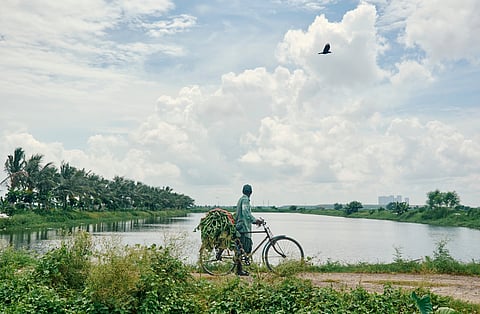
- Destinations
- Experiences
- Stay
- What's new
- Celebrating People
- Responsible Tourism
- CampaignsCampaigns
- Subscribe
- Buy Now

In celebration of World Wetlands Day on February 2, India welcomed four new wetlands to its list of Ramsar Convention sites, elevating the total to 89 internationally recognised wetlands. This significant recognition highlights the invaluable ecological importance of these areas. The newly designated sites include the Sakkarakottai Bird Sanctuary and the Therthangal Bird Sanctuary in Tamil Nadu, the Khecheopalri Wetland in Sikkim, and the Udhwa Lake in Jharkhand. Together, these wetlands not only enrich biodiversity but also serve as critical habitats for countless species, underscoring the need for their protection and preservation.
Tamil Nadu has now become the state with the highest number of Ramsar sites in India, boasting a total of 20. Sikkim and Jharkhand have also marked their presence by adding their first Ramsar sites to the list. Union Environment Minister Bhupender Yadav highlighted the recent addition to the Ramsar list on Friday as a powerful testament to the harmonious progress of ‘Prakriti’ (nature) and ‘Pragati’ (development) under Prime Minister Narendra Modi's leadership.
A wetland is an ecosystem characterised by soil that is saturated with water, either permanently or seasonally. These areas support a diverse range of aquatic plants and wildlife. According to The Ramsar Convention, "wetlands are areas of marsh, fen, peatland or water, whether natural or artificial, permanent or temporary, with water that is static or flowing, fresh, brackish or salt, including areas of marine water the depth of which at low tide does not exceed six metres." Fish ponds, rice paddies, de-pollution and stabilisation ponds, and salt-pans are human-made wetlands.
Worldwide, there are 2,529 designated Ramsar wetlands. India has the highest number of Ramsar wetlands in Asia and ranks third globally, following the United Kingdom, which has 176 sites, and Mexico, with 144. Over the past decade, the number of Ramsar sites in India has increased from 26 to 89, with 47 of those added in just the last three years.
When you are travelling to different states in India, keep an eye out for the wetlands which are home to incredibly diverse flora and fauna. Some of the important wetlands in India include the Hokersar Wetlands Reserve in Kashmir, the Ropar Wetland in Punjab, the Sarus Crane Conservation Reserve in Uttar Pradesh, the Keoladeo National Park, and the Sambhar Lake in Rajasthan, the Thane Creek in Maharashtra, the Chilika Lake in Odisha, the Bhitarkanika Mangroves in Odisha, the Deepor Beel Wildlife Sanctuary in the Kamrup district of the lower Brahmaputra valley in Assam. Assam also has the Dehing-Patkai Wildlife Sanctuary, Majuli Island, and the Pobitora Wildlife Sanctuary. There are many more which add to the incredible bio-diversity of India.
A unique Ramsar site is the East Kolkata Wetlands in West Bengal. It is responsible for the world's largest wastewater-fed aquaculture system. Most people do not know about this hidden gem, which has a network of water bodies, paddy farms, and marshlands in the middle of a metro city. The best way to explore it is by signing up for a tour to see the farms and fishing communities, palm-fringed paths, and fishing huts on stilts.
